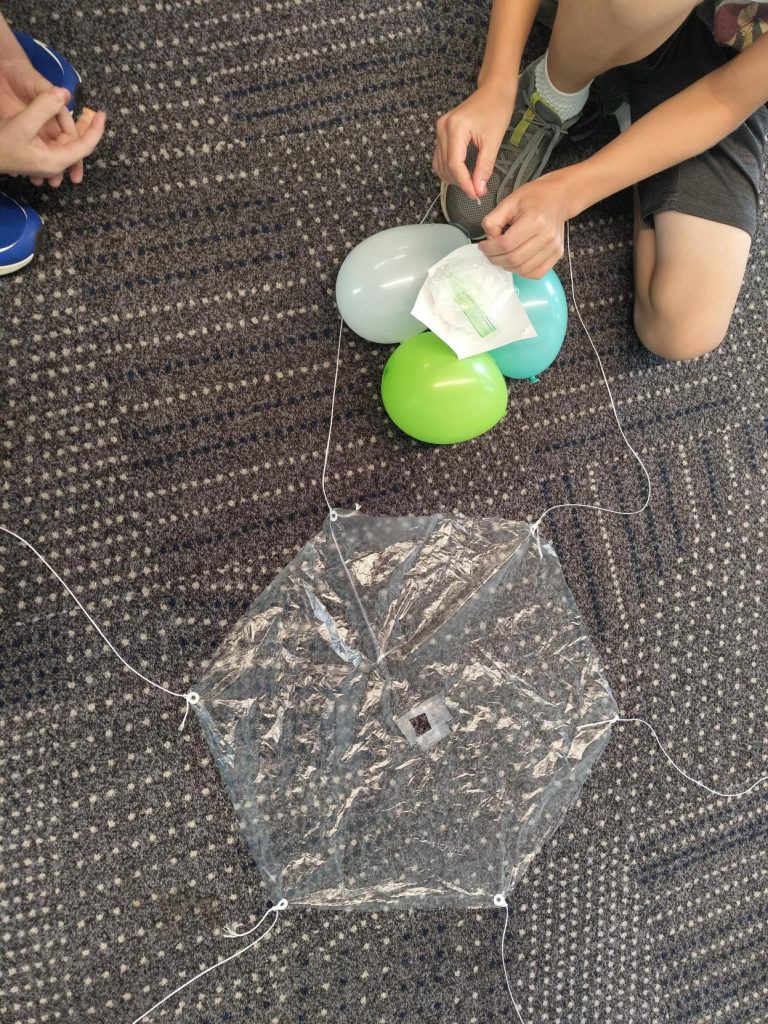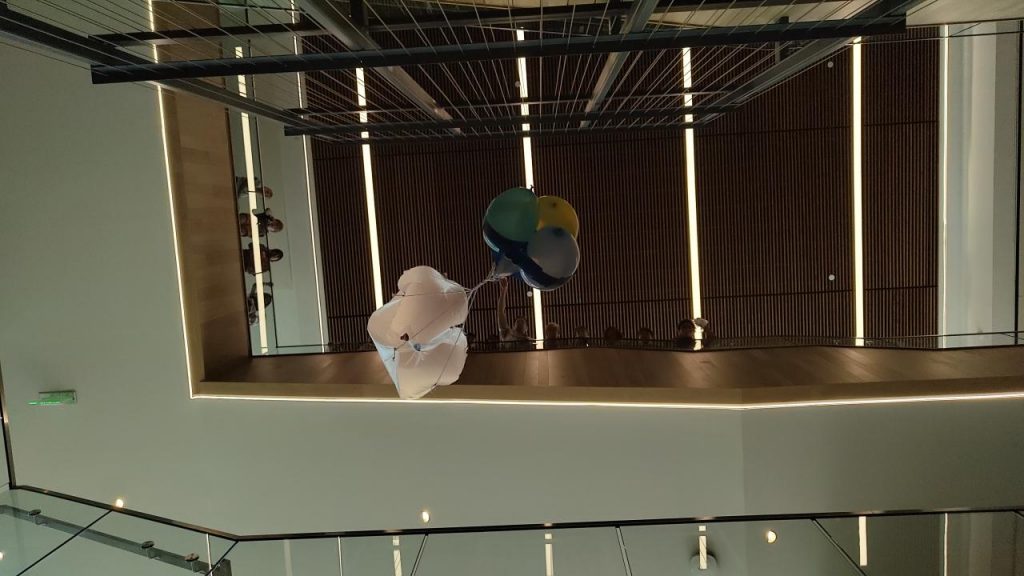The Astronomy Tricks of the Trade group had a fun first day. To help break the ice, our first project revolved around one of the favorite group activities held at Dyer Observatory’s camps – the creation of a lander to protect an egg astronaut (the “egg-noaut”) on its way back to Earth. We began with a discussion around video simulations of some of the rovers and landers that NASA has sent to the Red Planet over the years and focused on the similarities and differences in the way the missions reached the surface. This included use of parachutes, airbags, retrorockets, and the amazing “Sky Crane” used to land the Curiosity and Perseverance rovers. Students then paired up to construct capsules, complete with balloon airbags and plastic film parachutes, and were given the option of upping the stakes by adding small magnetic weights to see if the design was sturdy enough to support the additional payload. To make it a bit more realistic, students were also given a budget to purchase supplies. Points would be earned if they came in under budget and deducted if they were over budget. Final points were tallied from the budget and by how many weights they added to their lander (0.5 points per weight) IF their egg-onaut came out unscathed. In the end, about half the groups’ egg-onauts made the journey without a crack.
Our next activity focused on a scale model of the solar system. We began with a short presentation about the sizes of the planets compared to one another, compared to the Sun, and then the Sun compared to other stars. We even went a step further to discuss how big stars are compared to nebulae from which they form and how big those clouds are compared to our galaxy. This brought forth a multitude of questions from the students, so we explored a planetarium program called Stellarium to get a better idea of types of objects out there. However, we did not take a deep dive due to time restrictions, but we have time set aside later this week to discuss more about what is in the sky above us.
We concluded our day with a math-based exercise that focused on the students trying to determine the sizes of the planets and their orbits if given real values and the size of a scaled Sun (12 cm in this case). The hard part was doing this without a calculator or computer! Students either tried to gauge the sizes based on what they saw in the PowerPoint slides or by trying to calculate the values. Most opted for the visual approximates, but a few students took a stab at trying to do the not-so-easy calculations. It ended up being a good exercise in how one can use approximations/rounding to get a ballpark idea of a value. We will finish the activity on Tuesday by going outside and walking off the positions of the scaled planets, and students will likely be surprised by just how expansive our solar system is.
I am especially excited for the rest of the week as we visit the Vanderbilt Dyer Observatory during the mornings. If forecasts hold, there is also a good chance we will even be able to view through some of Dyer’s telescopes in the daytime. In any case, I am sure the telescope and the many unique aspects of the observatory will have a lasting impact on them!
Questions for students:
- What was the most interesting aspect of how missions have landed on Mars (e.g., SkyCrane, using airbags to cushion, parachutes)?
- Were there any surprising things you learned about the sizes of stars or how big the planets are compared to one another?
- For investigation – what are some of the solar systems like that have been found around other stars? For example, do they all have planets orbiting out at distances we find in our solar system, or are the planets closer in/farther out? A good example is the TRAPPIST-1 system.

